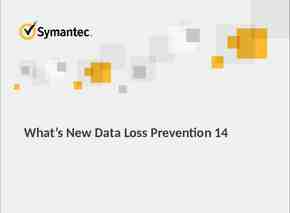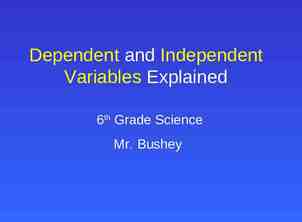Inducements (Rewards and Punishments) Group F: Willie Jackson III
42 Slides146.50 KB
Inducements (Rewards and Punishments) Group F: Willie Jackson III Lisa Kanarek Jennifer Kim Vatrice Perrin Jennifer Woodard
Our Game Plan (Agenda) 1. 2. 3. 4. 5. 6. Introduction and theory Components of inducements Assumptions Inducement problems Application to the polis Wrap up/Questions
What is the Theory of Inducements? A possible response to commons problems. What is a commons problem? Exists when there is a divergence between private interest and public interest. Or, when individuals benefit (or lose) from doing something that harms (or helps) the community.
So What is the Purpose of Inducements? To bring individual motives into line with community goals. Inducements alter the consequences of individual actions so that what is good for the community is also good for the individual.
Three Parts Inducement giver Inducement receiver/target Inducement
The Inducement Giver Must be able to implement a consistent policy of rewarding or penalizing behavior. Usually a single person acting on behalf of and with the authority of a larger organization or political entity. Different forms of givers Examples?
The Inducement Receiver/Target Must be capable of making a decision and taking a single course of action. May be one individual representing a larger community/organization.
The Inducement To put it simply, we can call it a consequence Can be a reward Can be a punishment WHAT DETERMINES WHETHER AN INDUCEMENT IS A REWARD OR PENALTY IS NOT THE GIVER’S INTENTION, BUT THE TARGET’S EXPECTATION.
Can anyone think of any examples? Rewards? Tax write-offs Bonuses Punishments? Jail Fines
Examining Inducement Assumptions 1. We can alter people’s self-propelled progress toward their goals by changing the obstacles and opportunities they face. a. We assume people are rational. b. People can adapt. c. People often hang on to old habits, choices, and actions.
Buckle Up (Obstacles in inducing seatbelt use) What obstructs compliance: Willingness to adapt? Difficulty breaking a population habit? Other car safety features compromising perceived seatbelt effectiveness? Other legislation that asks to change public opinion? How long does it take to change public behavior?
Examining Inducement Assumptions 2. Giver and receivers are unitary actors. a. The actor (giver or receiver) is an entity capable of “rational behavior”: Giver must implement consistent policy of rewards of penalizations to specified target Receiver must comply – with group mentality
Examining Inducement Assumptions 3. The receiver has some orientation toward the future. a. Costs and rewards shape future behavior in order to shape future results. b. Gaps in inducements Immediate vs. future inducements Can anyone think of any examples?
A Plan for Education: Florida's Blueprint for Improving Schools Goals: To improve Florida schools and provide accountability. The blueprint also includes provisions to eliminate social promotion and raise standards for teacher certification.
A Plan for Education cont. All Florida schools are graded on a scale from A to F. Each school is assessed according to the percentage of students taking the FCAT and the performance of such students. Schools that receive an A or show significant improvement are eligible for school recognition funds, however, others that receive a “D or F grade are eligible for financial assistance from their district and the state, as well as additional staff to help with school improvement.”
A Plan for Education cont. All scores are published on the Florida Department of Education website, publicized in the media, and sent home to respective parents. Students attending schools that receive an F for two out of four consecutive years may choose to attend another school with a C or better grade.
A Plan for Education cont. Proponents cite the rise in Florida’s reading scores and the increased emphasis on struggling students, while opponents question the heavy reliance upon standardized testing, teaching to the test, the failure to address achievement gaps and historical inequities prevalent in the national education.
Examining Inducement Assumptions The target must care about the costs and rewards of the inducement. Time frame for change The effect of timing on the receiver
Examining Inducement Assumptions 4. Purposeful notions of cause a. Effect of intended consequences of purposeful action. b. Result of unintended consequences of purposeful action.
Examining Inducement Assumptions “Inducements Gone Wrong” How do unintentional consequences effect policy making?
When should inducements be used? Simple causes To reward targets that feel particularly needy Inducement systems work by capitalizing on weakness of targets, not by empowering them.
Inducement Problems Even though each person within a group may be a rational actor (predictable outcomes), membership in a community or organization alter the way individuals respond. Chaos? Harmony? What do you think?
Smells like Groupthink . 1952 by William Whyte Rationalized conformity where members hold certain values as right, good, and just A collective entity, in applying this concept, therefore have one direction in responding to policy Trick is to determine how the group thinks on issue and create inducement that herds them toward desired action/response
Inducement Problems The longer the time span between the reward or penalty on the one side and the behavior change on the other, the more likely the situation of the target will change and along with it, the value of the inducement.
Application to policy To maximize chances of an inducement making desired impact on constituents, make the inducement effective ASAP Ex: FL Constitutional Amendment 8 Physician malpractice “three strikes” rule Immediate response (and fear) to prompt implementation by physicians Impact: Legislation induced physicians toward more accurate outcomes, relocation, or threat of losing license (aka: better tx outcomes)
Inducement Problems When a social problem is rooted in a complex organizational system, a web of institutional patterns and practices, or a long-standing historical pattern of social and political relationships, inducements applied by on narrow set of actors to another are unlikely to have a significant impact.
Bush’s Health Proposal Jan 2007 State of the Union Address: No taxes on portion of income for the insured Up to 15K for families, 7.5K for singles Proposal supposed to convince (induce) uninsured that health care is affordable But, if no money for insurance before, how is it within easier reach? Issue too embedded for tax break to solve
Positive Inducements Wage productivity bonuses, foreign aid, or trade subsidies, may create an alliance and a spirit of goodwill. In fulfilling the giver’s wish, the target creates an obligation for the giver to fulfill a promise, and the implicit bargain creates a sense of loyalty and mutual aid.
Negative Inducements Fines, tariffs, and embargoes, create a climate of conflict and divide parties, EVEN if the threats are not carried out. Threats and penalties, even when they succeed from the point of view of the giver, build resentment and solidify an oppressor-victim relationship.
Inducements in General There is one political similarity between negative and positive inducements. *Rewards, just as much as punishments, are efforts by one party of control the behavior of another.
Other Inducements; Incentive Schemes Often presented in political rhetoric as policy instruments that are noncoercive and respectful of individual autonomy. The real truth of it A behavior change is increased because targets are dependent on the giver and unable to attain the “goodies” in other ways.
Inducements in the Polis In the polis, inducements are usually designed by one set of people, applied by another, and received by a third party. What is the biggest problem here? These elements in polis make giving out inducements difficult.
Negative Sanctions in the Polis Divisive and disruptive to relationships and the sense of community. Fear of poisoning one’s social relationships and work environment restrains sanction givers. Imposing a penalty often creates costs for the giver.
Negative Sanctions in the Polis cont’d. Sometimes designers of sanctions make them so drastic that the sanction givers are reluctant to impose them. Penalties can have very concrete, material costs. Increase in taxes
Positive Rewards in the Polis People fear the divisive and competitive atmosphere that may result from positive inducements. Handing out rewards can create costs for the giver.
Inducements in the Polis Discrepancies Sometimes inducements are designed so that by imposing a penalty, one hurts the very thing one is trying to protect. An incentive may contain an implicit penalty, but the penalty is virtually unusable.
Downfalls of Sanctions Some people welcome sanctions as proof of their victimization, test of their commitment, and/or toughness. Sanctions may even harden resistance to change.
Giver v. Receiver The giver tends to focus on inducements that he/she controls. For the receiver, new inducements always fit into a web of reinforcing and crosscutting inducements. WHY DOES THIS MATTER?
Slippage Probably the most important reason between the design of inducements and the target’s response is that people are strategic as well as adaptive. Simply put, many will try to reap a reward or avoid a penalty without changing their behavior.
Scheming in the Polis Targets will sometimes try to gain control of the political institution that controls the inducement system. Sometimes they will try to change the rules by cajoling, bargaining, or bribing the givers.
Conclusion Inducements impact of people’s behavior depends on how they are interpreted by both the givers and receivers, and their meaning is subject to ongoing negotiation and change.
Any Questions?















































